Showing 51–60 of 139 results
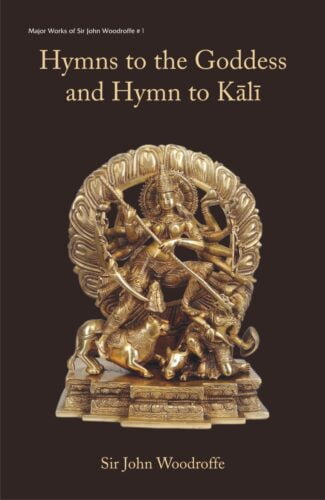
This volume Hymns to the Goddess is an endeavour of Sir John Woodroffe (Arthur Avalon) to translate the Sanskrit hymns in praise of the Goddess or Devi, scattered in Tantra and Purana texts, Mahabharata, and in the hymns of Shankaracharya. Hymn to Kali (Karpuradi Stotra), another book within the book, is a celebrated Kaula stotra, having commentary on the hymns.
The Goddess or Devi is God in Its Mother aspect. Devi, who is existence, consciousness and bliss, is thought of as a female, a male or pure Brahman. This volume Hymns to the Goddess is an endeavour of Sir John Woodroffe (Arthur Avalon) to translate the Sanskrit hymns in praise of the Goddess or Devi, scattered in Tantra and Purana texts, Mahabharata, and in the hymns of Shankaracharya, who was an incarnation of devotion and a great philosopher, Valmiki and Indra.
After a general introduction, the book starts with a hymn to Kalabhairava, the spouse of Devi, followed by Devi stotras. In these hymns, Devi is praised as Bhairavi, Bhuvaneshvari, Adyakali, Lakshmi, Tara, Mahishamardini, Annapurna, Sarasvati, Durga, Tripura in Tantra texts; Sarvavishvajanani, Ambika, Chandika, Mahadevi and Jagadambika in Puranas; Durga, Arya, Durga in Mahabharata; Tripurasundari, Ganga, Ananadalahari, Yamuna, Narmada and Mahalakshmi.
Hymn to Kali (Karpuradi Stotra), another book within the book, is a celebrated Kaula stotra, having commentary on the hymns. It, in addition to mantroddharadhara, contains stotras of dhyana, yantra, sadhana, madya, mamsa, maithuna and phala-shruti matters.
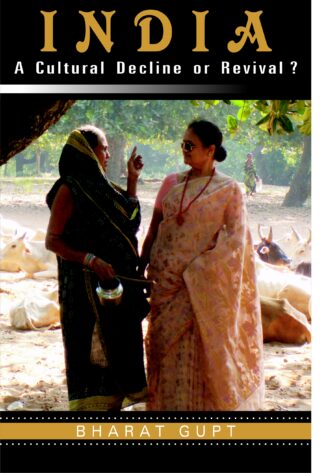
This book critically analyses the state of affairs in India after the British left in 1947 and examines whether Independence has ushered an era of cultural and social freedom or a cultural decline has set in a thought-provoking subject.
It is often taken for granted that Independence from the British rule also ushered an era of cultural and social freedom in India. The author wishes to examine if that is true or if a cultural decline set in soon after. Based on a verse in the Pancatantra, the book has been divided into six parts: Eka (person), Kula (family), Grama (habitat), Janapada (land), Prithvi (earth) and Atma. Issues of education; conflicts between the classes, regions, jatis, languages and religions; expansion of proselytizers; lack of governance; tensions between the legislators and judiciary; rise of unbridled consumerism; falling standards of democracy; dilemmas created by notions of dharma challenged by Westernized modernity; and the problems of attaining universal harmony, are all put into a perspective under these six categories. While examining the state of affairs the author also suggests a way for the pursuit of happiness through unselfish transcendence.
The South-East is a cultural perspective aptly named agneyi the direction of the God Agni. It is reflected even in the Sino-Japanese Mahakarunagarbha mandala of the 8th century where Agni is surrounded by sages: Angiras with his consort Gautami and Atreya with his consort Bhrgvi. In the Pao-hsiang Lou pantheon Agni is surrounded by eight rsi’s Angiras, Vasistha, Garga, Markandeya, Gautama, Kasyapa, Shan-ch’eng-ming-yang and Su-chi-i (the Sanskrit names of the last two have to yet to be found). In Indic terms, the conceptual space of SE Asia endows it with the serenity of the mind, the grandeur of structures, the profundity of expression derived from Sanskrit. The SE is the mind ground of the sages, the rishis, and as such the marvellous manifestation of the Hindu-Buddhist genius. This book chronicles the dynamism, the fire, the Agni of the Agneya (SE) direction across the past that shades into the present with tomorrows inside.
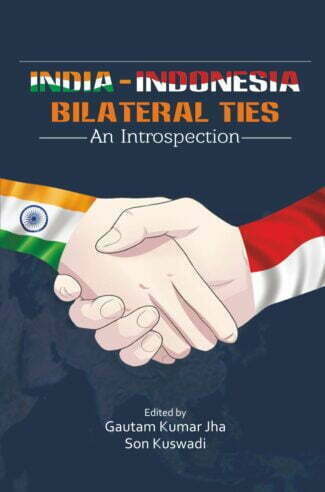
India and Indonesia maintained strong cultural and historical relationship for few millennia. As a testimony to it India stood firm for Indonesia’s freedom from the Dutch, inspiring its leaders. With India’s Look East Policy, the mutual relationships, especially in trade, have reached new heights. The economic reforms in both the countries demand stronger ties in the days to come.
India and Indonesia experienced close historical and civilizational relations from the ancient times to sixteenth century ce. During the Indonesian freedom struggle, its leaders were inspired by the anti-colonial views of Indian leaders. India firmly stood for the freedom of Indonesia from the Dutch.
During the post-colonial period, the bilateral relations underwent ups and downs. Indias Look East Policy of the 1990s made a phenomenal leap in both the countries relationship. India by leveraging its soft power, stable foreign policy, non-interference policy established trust among many South-East Asian countries and in particular Indonesia. Indonesia, being the largest country in the region, has been proved as one of the greatest allies of India.
After a decade of stable governance under President Susilo Bambang Yudhoyono, Indonesia now has a fairly strong democratic set-up. The country made the transition after thirty-one years of dictatorship of Soeharto, under the leadership of B.J. Habibie, Abdurrhaman Wahid and Megawati Soekarnoputri.
Now, when both the countries are poised to fly high after having witnessed considerable economic reforms, they need to forge stronger ties in order to further expand bilateral trade and strategic relations, being the main focus of this volume.
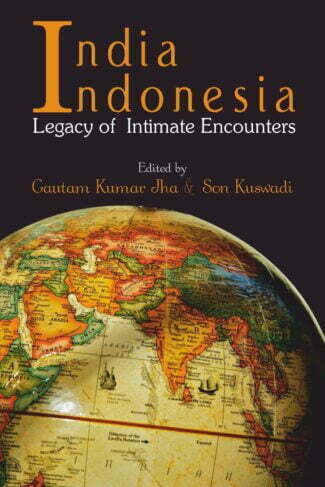
Evidences suggest that India and Indonesia were in trade relations for many millennia, starting from 3500 bce. Indonesia got all three religions Hinduism, Buddhism and Islam from India. There were ups and downs in their relations. This volume vividly talks about topics that foster(ed) mutual relations such as culture, religion, language, traditions and education.
Evidences suggest that India and Indonesia were in trade relations for many millennia, starting from 3500 bce. Suvarnabhumi (Sumatra) is mentioned in Jatakas, Indian epics and Mahavamsa, though there is no sequential documentation of it. The trade relations paved the way for Bali importing Indian pottery, priests coming from India and getting absorbed into the Indonesian society and the Indian traders and priests marrying the locals and settling there, thus spreading Hinduism and Indian culture throughout Java, Bali and Sumatra. Indonesia thus got all three religions Hinduism, Buddhism and Islam from India.
The historical and civilizational relations continued till the sixteenth century ce. The Western colonization drive of Asian countries broke this long-stood relationship. Coming to the twentieth century, Indonesia and its leaders were highly inspired by the anti-colonial views of Indian leaders like Mahatma Gandhi, Jawaharlal Nehru, Vallabhbhai Patel and Rabindranath Tagore, and India extended her moral support to the freedom struggle of Indonesia. But during the post-colonial era, the bilateral relations between both the countries were incoherent. The Look East Policy of India in the 1990s rejuvenated the relations and Indonesia became one of the greatest allies in fulfilling Indias South-East Asia Policy.
The scholarly articles in this volume vividly talk about topics that foster(ed) mutual relations such as culture, religion, language, traditions, education and so on, keenly drawing the attention of policy makers, trade analysts, cultural enthusiasts, investors, among a wide range of audience.

The book relates the diverse experiences of Mr. Tzannis Tzannetakis, a former Greek Prime Minister, in India: he witnesses centuries-old marvels, landmarks of its long religious-cultural tradition; and his response is profound and genuine.
A journey to India . . . is quite unlike a journey to any other land . . . this sentiment expresses the uniqueness of a visitors experience of India. For, among other things, India is a perpetual mystery to him from the beginning; he wades through the mystique and out of it; and he is never free of it. For Mr. Tzannis Tzannetakis, a former Prime Minister of Greece, India is this and much more. His informal experiences presented here are diverse and steeped in the historic-cultural flavour special to India. He sees its centuries-old palaces, forts of ancient maharajas, of the glorious Mughals; the unparalleled cave monuments of Ajanta-Ellora with their exquisite carvings, the breathtaking sculptural decorations and the architectural dream of Khajuraho; the grandeur of the Taj, a wonder in white marble; the exotic deserts of Jaisalmer; the heart of holy India, Banaras, with the ever-flowing Ganga; the marvel of Delhi which amalgamates the old and the new. His response is, likewise, rich with a range of tones; he not only admires the material landmarks of ancient India but breathes in the spirit of the past the old delight, the royal romance, the dignity, valour in that chivalry . . . His is not simply a discovery of India but an analysis of Indias time-tested values and its modern message in order to understand India in the real sense its unique past; the India of today, of the traditional and the modern; and the India of the future . . . its goals, aspirations. The authors tone is wonder-struck but, at the same time, genuine and realistic. He captures the essential India and not just its forms and colours to present a delightful, critical and sensitive picture.
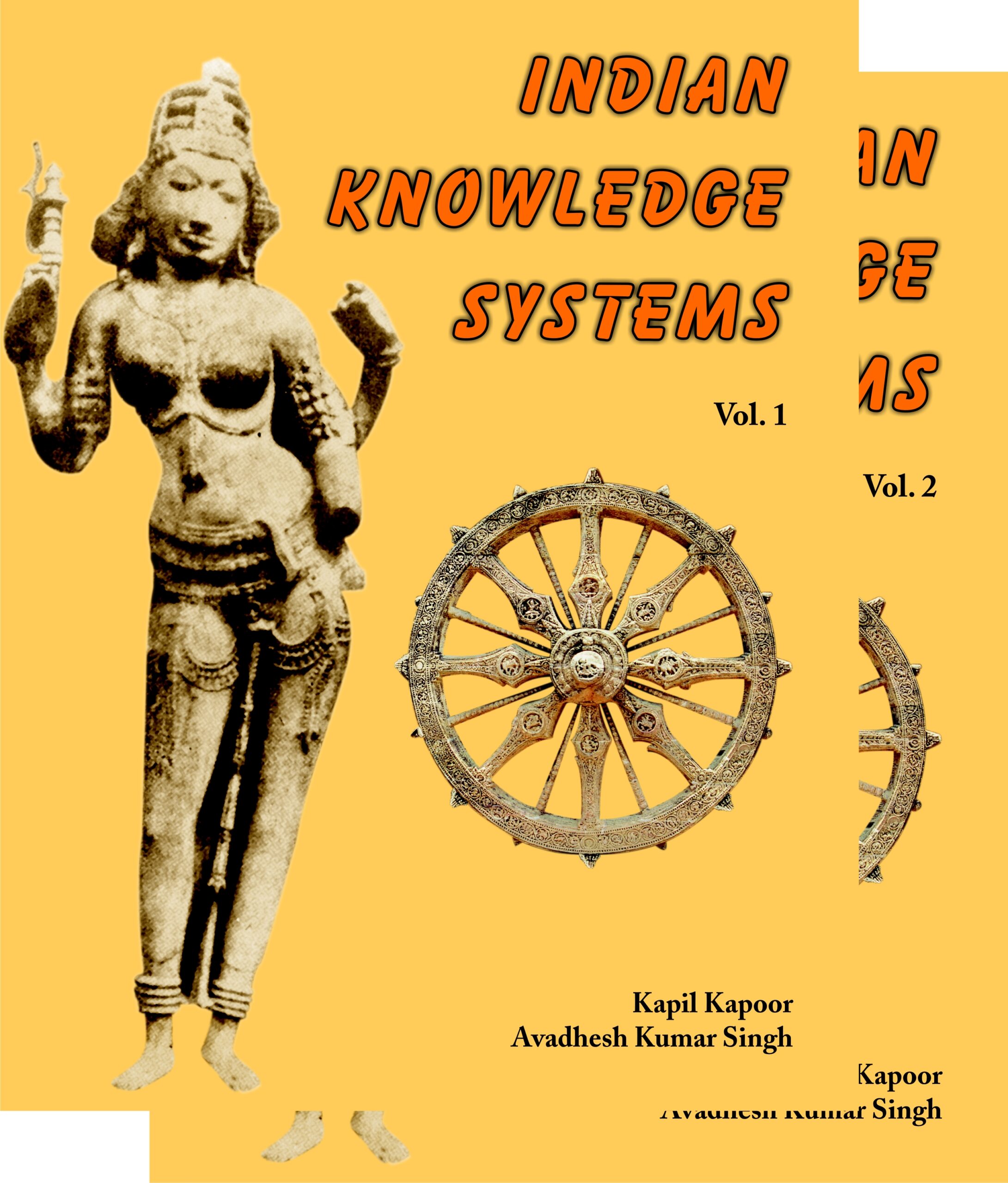
India has continuous and cumulative intellectual traditions and thisbook endeavours to expound the major Indian Knowledge Systems, under its seven sections and makes available authoritative statements that articulate their validity for the contemporary Indian and Western reality in the modern perspective.
India has continuous and cumulative intellectual traditions in many domains of knowledge. This tradition has its beginning in the Rigveda, the first attested Indo-European document, and continues to be alive in the life, practices and learning of the Indian people. The power and pertinence of knowledge systems in this tradition are attested by the existence of innumerable texts and thinkers that continue to be the subject of study in major contemporary universities round the world. Not many today are aware of this rich heritage of thought. The Academy therefore produces rootless young minds that at best are ignorant and at worst have contempt for their own traditions of thought. The two volumes, comprising 34 articles by distinguished scholars, expound some major Indian knowledge systems viz. Logic, Philosophy of Language, Technology and Crafts, Polity and Governance, Ethics and Sociological texts, Architecture, Poetics and Aesthetics, Law and Justice, Mathematics and Astronomy, Agriculture, Trade and Commerce and Medicine and Life Science. Under its seven sections (i) Indian Knowledge Systems (Ex)Positions; (ii) Science; (iii) Medical Science in India; (iv) Psychology, Polity and Sociological Texts; (v) Aesthetics and Poetics; (vi) Philosophy, Logic and Language; and (vii) Knowledge Formation, Dissemination and Practice it makes available the first statements that articulate their validity for the contemporary Indian and Western reality.
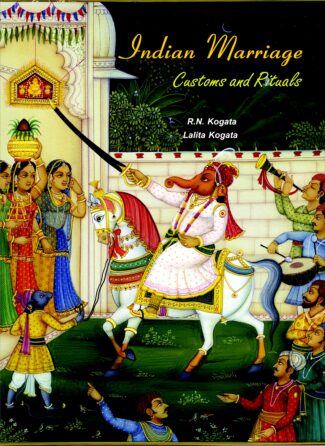
Marriage or Vivaah, particularly in India, is a sacred ceremony comprising various customs Þ religious and social Þ and Vedic rituals. These are meant to propitiate the gods for obtaining their blessings for the bride and the bridegroom, and to honour and entertain those who participate in the celebrations. This book explains in detail, all the important rituals which form part of the marriage.
Marriage is considered a very significant ritual for giving societys sanction to a close relationship between a man and a woman as husband and wife. It is, therefore, also called a social system. The marriage ceremony is a combination of many rituals, based on information contained in Hindu scriptures. It also represents and reflects the social customs and practices that are prevalent in the society. The rituals vary depending upon the community, the religion and the state where they are performed. The marriage customs, rites and rituals among royal families are mentioned in this book most of these rituals are followed by common people as well and are performed in the original or altered forms in the Indian society. Mr R.N. Kogata and Mrs Lalita Kogata did a lot of research and consulted several authorities and have written in detail about the various rituals involved in a human beings life from birth to death. Different scholars have mentioned different numbers of rituals and sacraments 25, 40 or 48. But Maharishi Veda Vyasa has described 16 rituals as important. Out of these, the Vivaah (marriage) samskaar itself encompasses various rituals the main ones covered in this book are: the Bindaulee (wedding procession); Hathalevaa (hand-taking ceremony or paanigrahan), Phere (agni pradakshinaa, circumambulation of fire); Kanyaadaan (giving away daughter in marriage); Maangbharaaye (filling vermilion); Mangalsutra (tying the wedding thread); Saptapadee (walking seven steps together); and Vadhu kee Vidaaee (brides departure to her in-laws house). This book should be in all households in order that all will know the meanings of the various rituals in a marriage particularly in the present days when learned pandits who can explain the rituals, are few, and people have no time or inclination to go through voluminous scriptures or texts on the subject of marriage.
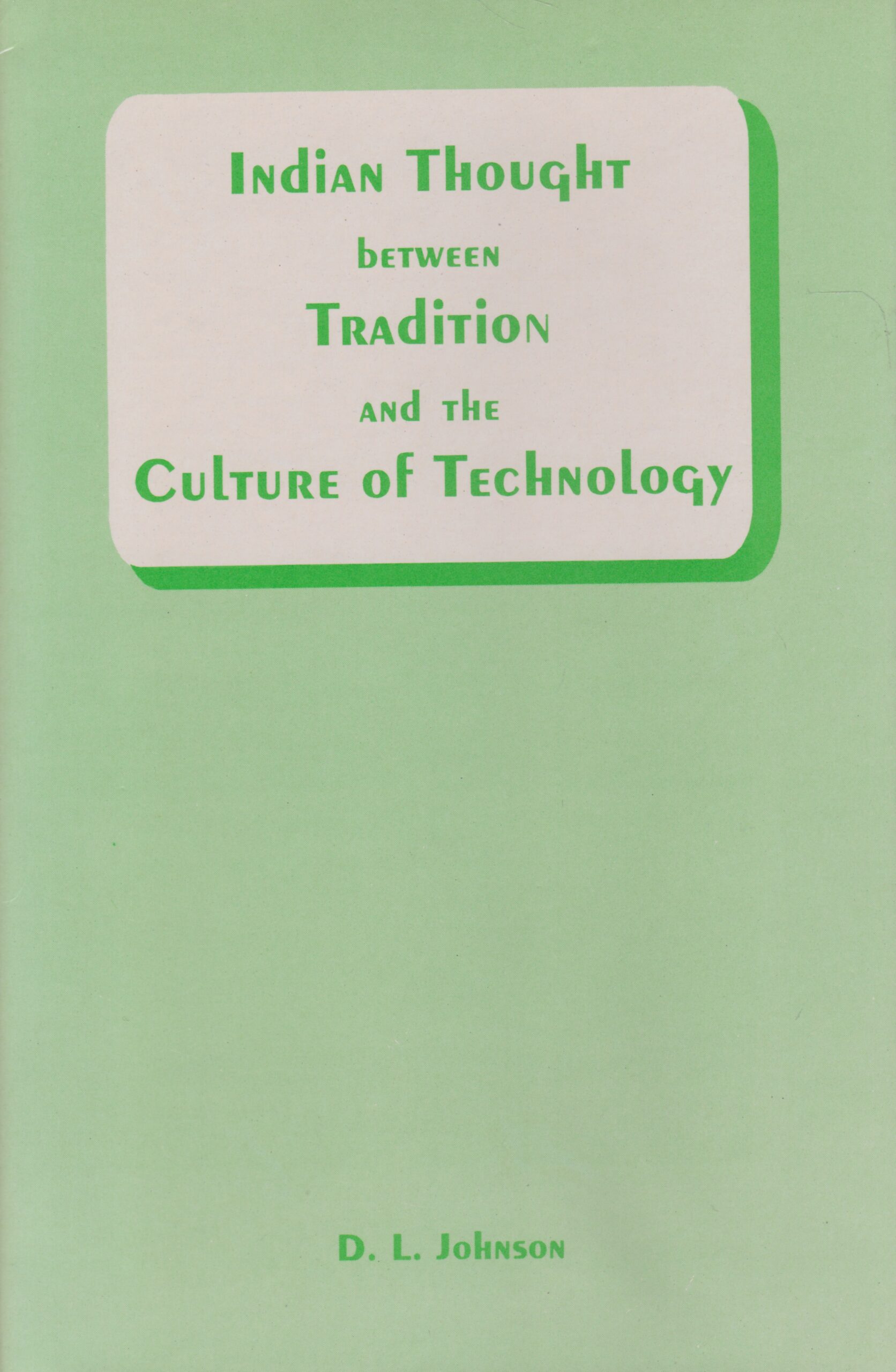
It is a socio-cultural study of the contemporary Indian society in the context of the invasion of the culture of technology. Analysing the reactions of Gandhi, Aurobindo, etc., it offers a futuristic assessment of the problem.
The book is a brilliant socio-cultural study of the contemporary Indian society in the context of the invasion of the culture of technology. The recent spate of technological advancements involves much more than the mere use of lifeless mechines. It is an inculcation of a constellation of values and ideas a new culture. In a tradition-bound society like India the culture of technology is looked at with panic and suspicion. The phenomenon of dehumanisation and the erosion of human values associated with this culture seems to confuse the Indian mind. Yet, India has not been able to withhold the march of this culture. Dr. Johnson makes a penetrating analysis of the Indian predicament with reference to the reactions of Gandhi, Sri Aurobindo and Jayaprakash Narayan; and offers a futuristic assessment of the problem. He argues that the solution lies not in dismissing the culture of technology but in incorporating it within the fabric of tradition, so that India can keep pace with the time. He tackles the problem by delving deep into the intracies of the matter of tradition and technology; and spells out the changes required in our traditional way of looking at things. The book is very contemporary in its approach and reflects a rare kind of optimism about Indias potentialities in facing the problem.

This volume is collection of eight lectures delivered by Dr Kapila Vatsyayan on different occasions, some in the memory of four eminent persons and another four on critical issues related to culture.
This volume is collection of eight lectures delivered by Dr Kapila Vatsyayan on different occasions, some in the memory of four eminent persons such as Ancharlott Eschmann, an art historian; Dr C.D. Deshmukh, founder of the India International Centre and former Chairman, University Grants Commission; Prof. Birendra Kumar Bhattacharyya, eminent writer social worker andformer president of the Sahitya Akademi and Dr D.S. Kothari, the doyen of science and a dedicated Gandhian, and the remaining four on a few critical issues related to culture.
These lectures delve upon crucial terms and topics like shastra and prayoga, and marga and desi in the study of Indian arts, other social systems and the sociology of religion; interface of culture and development; role of arts in social transformation; a modern rishi, the eco-cultural cartography of South Asia; the oral and written systems of knowledge transmission; the different aspects of Indias cultural heritage and identity; and Hinduism as a religion of divine immanence, where concepts like purusharthas and varnashrama-dharma are all part and parcel of the all-encompassing Sanatana Dharma.
This book thus enables readers to enlarge and nurture Indias cultural heritage and its allied features. In a fast-changing world, one should know his cultural past and thereby prepare himself to absorb what is needed, without losing his identity and existence.
| There are no products |